|
-
30th December 22, 01:14 PM
#32
As a kilt maker perhaps I can help.
This model illustrates the components of a kilt.

Beginning at the top is the Rise. This is the portion of the kilt above the top strap. On a Traditionally made kilt, designed to fit at full waist height, the Rise tapers outward to fit over the bottom of the ribs. The smallest part of the kilt is at the top strap.
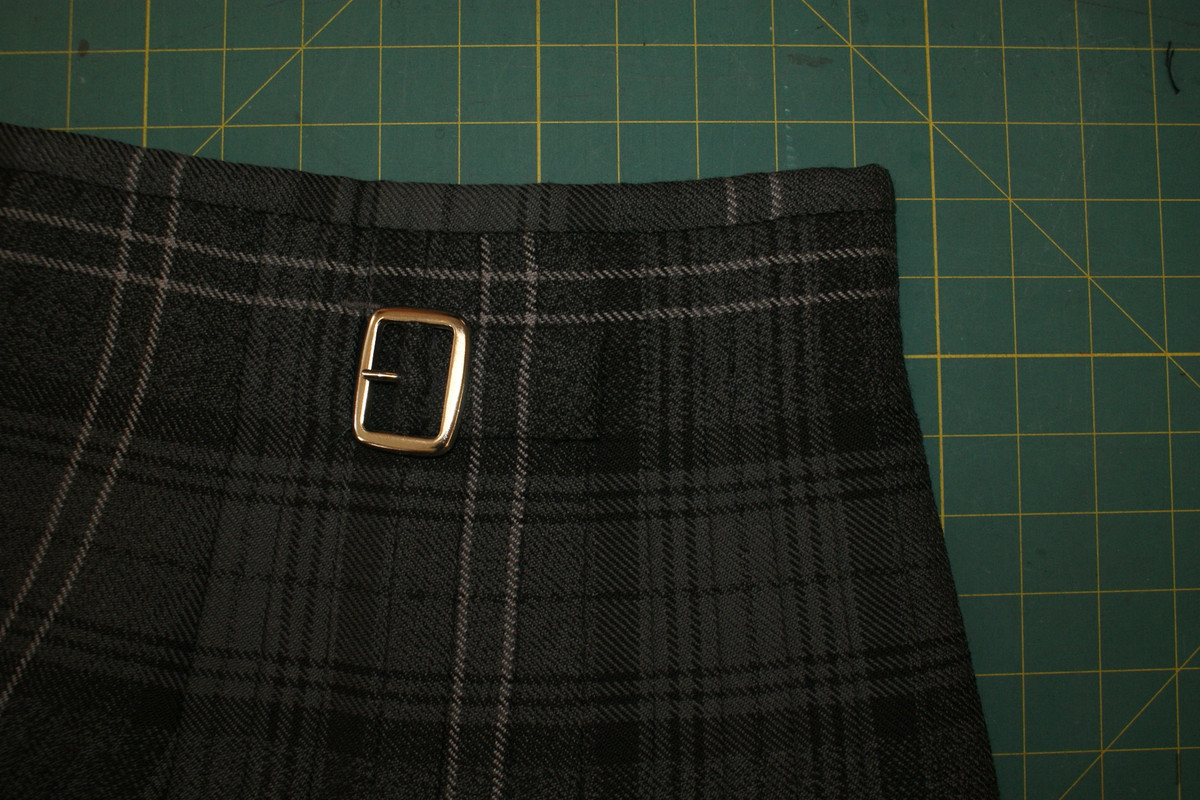
On many kilts made today, and all of the import kilts, there is no reverse taper to the Rise. The smallest part of the kilt is at the top band.
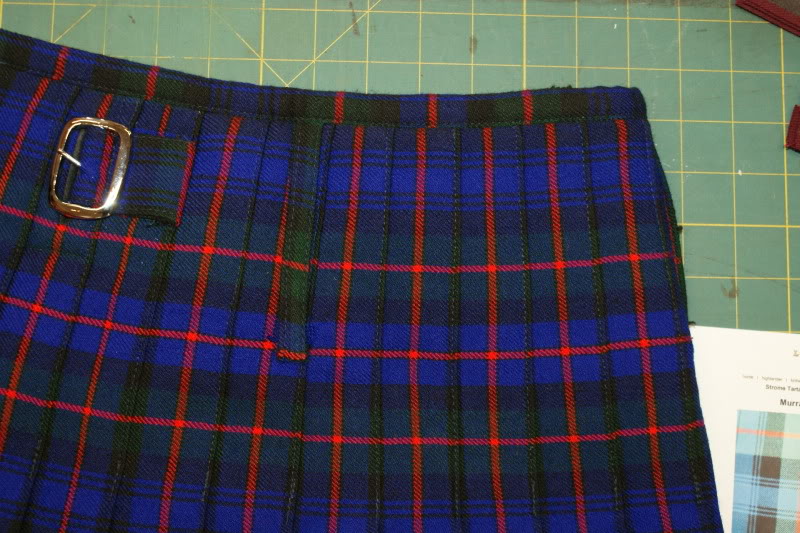
In the front are the two aprons. The under and outer aprons. Both should be tapered so that at the waist, the width is just over 1/2 of the waist circumference. At the hips, the width should be just less than 1/2 of the hip circumference. And these two widths are joined by a gentle "S" curve ending at the bottom edge close to a 90-degree angle.

On some kilts for guys with a large difference between the hips and the waist (or has a pronounced belly) his curve may be quite pronounced.
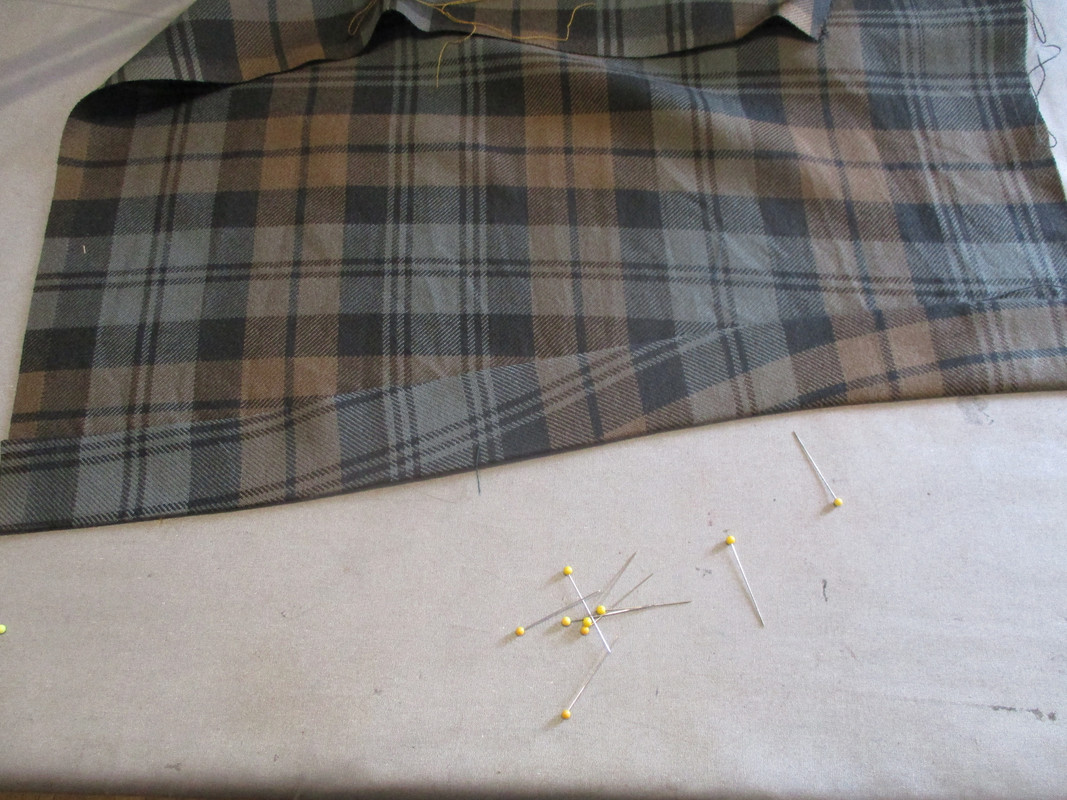
This is perhaps one of the most challenging aspects of kiltmaking as the idea is that the edges of the apron should fall straight down from the largest part of the belly and the outer edges about where the side seams of a pair of trousers would be.

If the apron taper is constructed incorrectly the apron edges may jut forward or open up a gap in the pleat spacing.
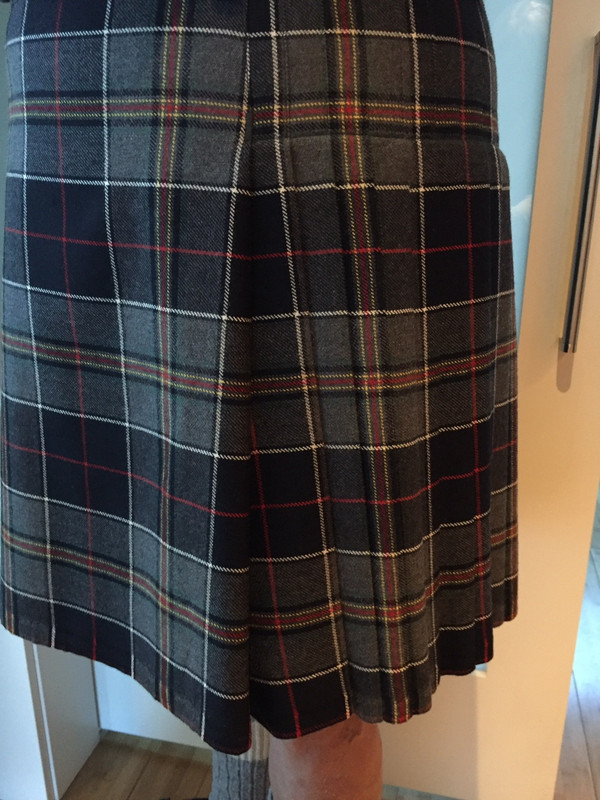
The idea is that the aprons should fall straight down from the largest part of the body in front. Without puckers or distortion. The sides should not stick out sideways like a ballet tutu while gently curving around the wearers' legs.
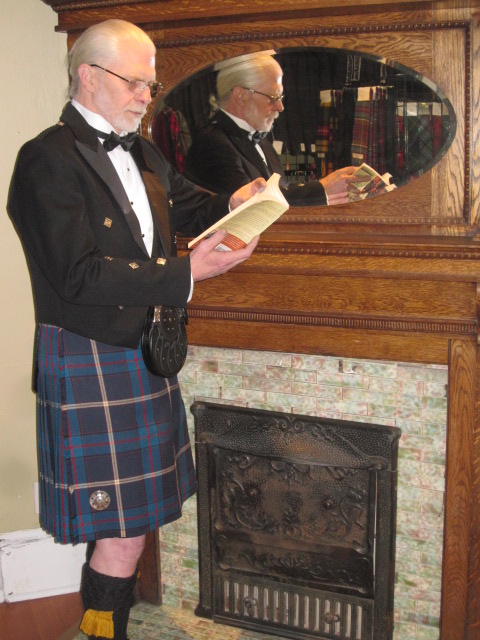
In the back of the kilt, from the bottom of the Rise, to the level of the widest part of the hips and buttocks is The Fell Area. This is where all the tailoring of a kilt is done.
Everyone is larger in the butt than at the waist. Even those with a large belly have a difference between the hips and the waist.
The pleats above the hip line are tapered. This taper is usually small in each individual pleat but combined they make up the total difference between hips and waist.

I am sure there are some kilts where all the taper is done in one or two pleats but this would not be the norm.
Below the bottom of the Fell Area the pleats should hang straight down, parallel, without large shower curtain folds or spreading outward in an "A" line skirt shape.
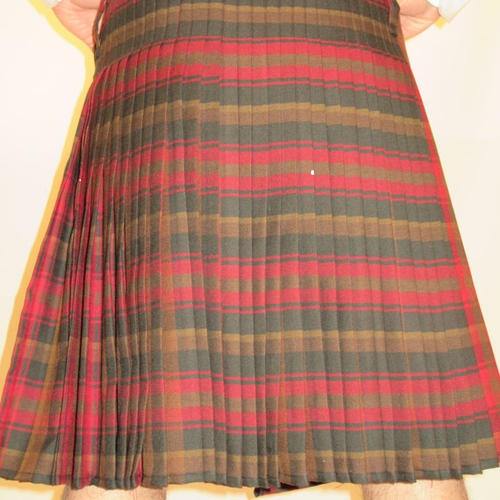

The success of the pleats is partly due to the care in laying out the pleats by the maker.

But mostly good looking pleats are due to the accuracy when pressing the pleats. The back of the kilt should appear as one single curve and from just a few feet away the individual pleats should not be apparent.
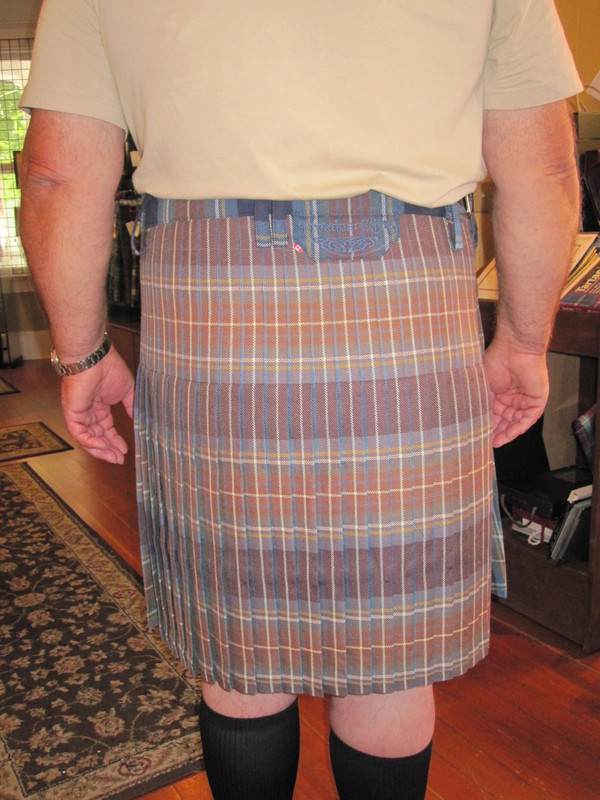
But of course, all of the above would be for nothing if the garment relied on the outer Tartan fabric and the stitching for all its strength.
This is perhaps the biggest difference between how a kilt is made and how blue jeans are made. Blue Jeans are made from a very stiff, stretch-resistant fabric. There are double rows of very strong stitching at the seam and rivets at stress points.
A kilt derives its strength from internal elements built inside and hidden from view by a cotton liner. Some think that the liner is there to keep the kilt clean. Well, if that were true the liner would be removable and washable.
The whole purpose of the liner is to hide the full floating interfacing and stabilizer that gives the kilt it strength, its shape, and allows the outer Tartan fabric to drape and swish naturally.
Some makers construct very elaborate internal elements that stretch all the way from one apron edge, all the way across the inside of the kilt to the other apron edge.
Basically you are wearing the internal elements.
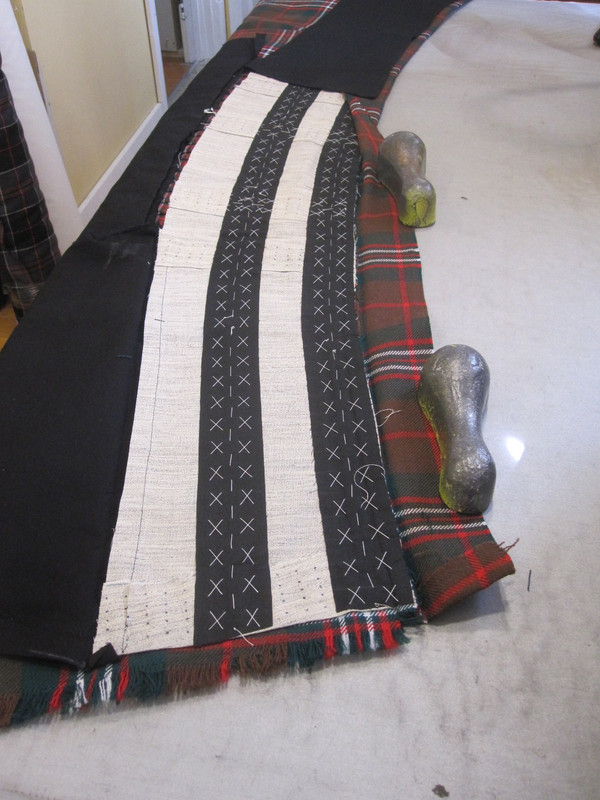
And some makers use a simpler or more basic method of construction.
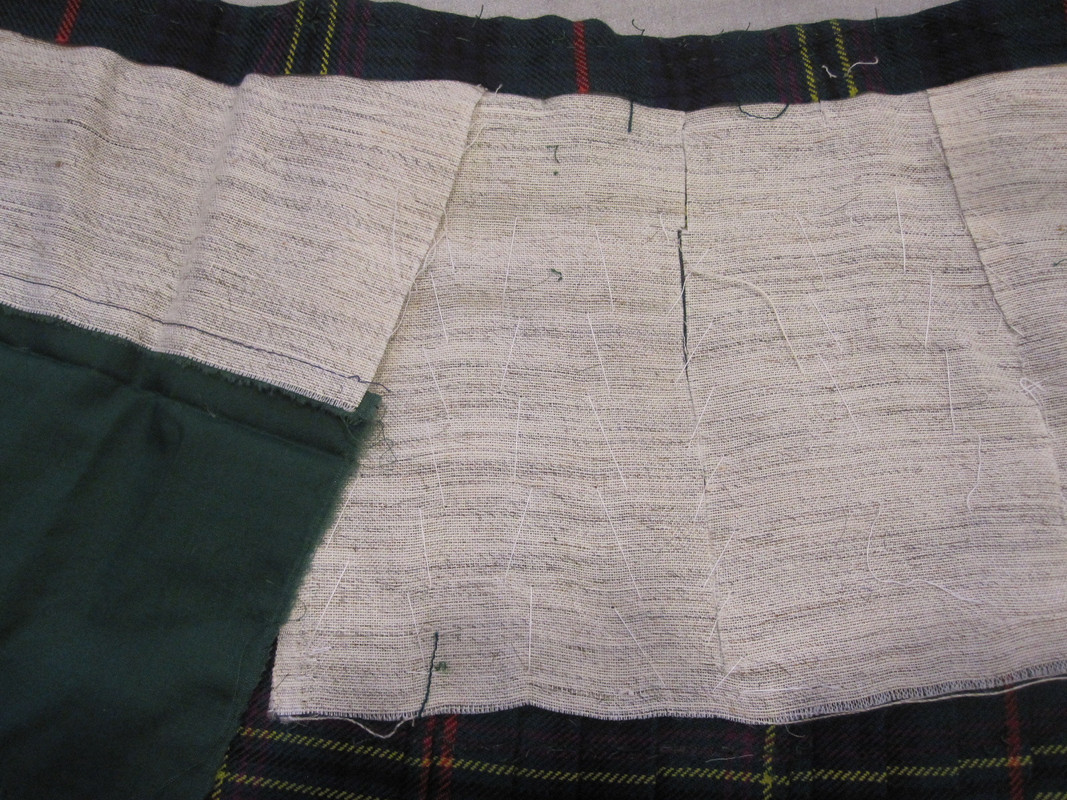
The goal of the internal elements should be the same.
Floating interfacing is a material that is stiffer vertically than it is horizontally. This gives vertical stiffness to the back of the kilt. Some kilts can have a Fell Area that stands up all on its own. And some, not so much.
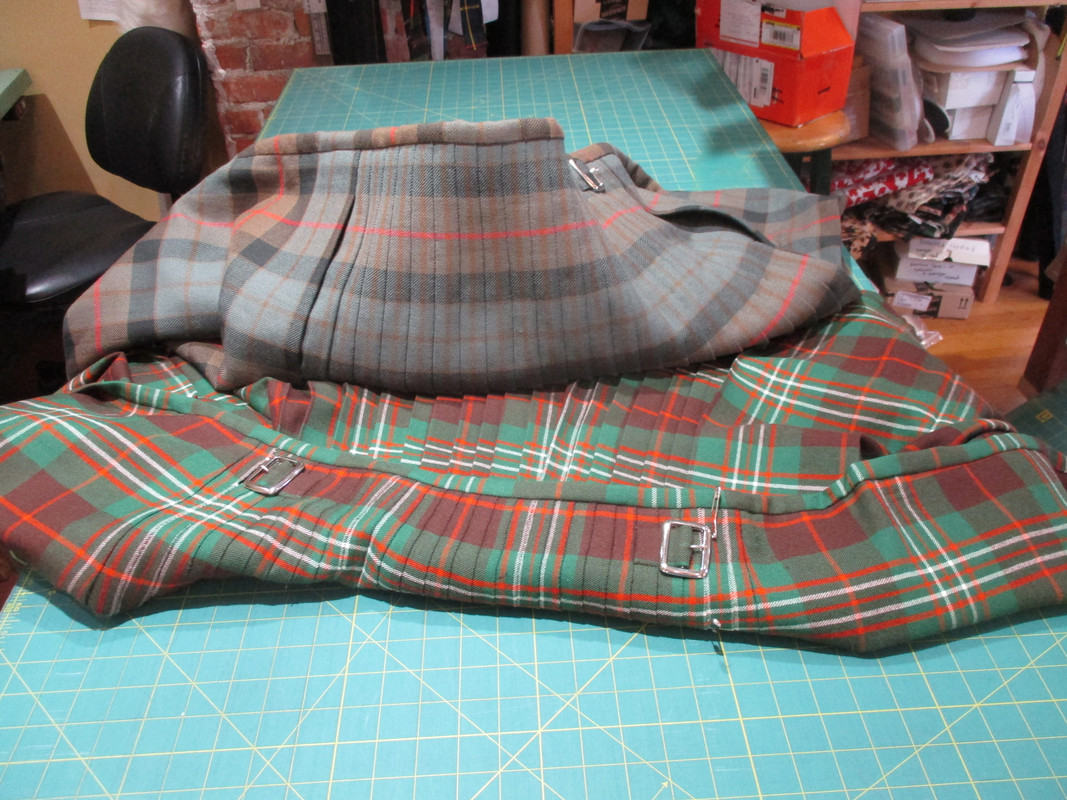
One of the more important internal elements is the Stabilizer. This acts as an internal belt.
If the internal elements are missing or fail over time the outer Tartan fabric cannot stand up to the stresses all on its own. And distortion of the outer fabric is the result.

Or a total failure of the entire garment.
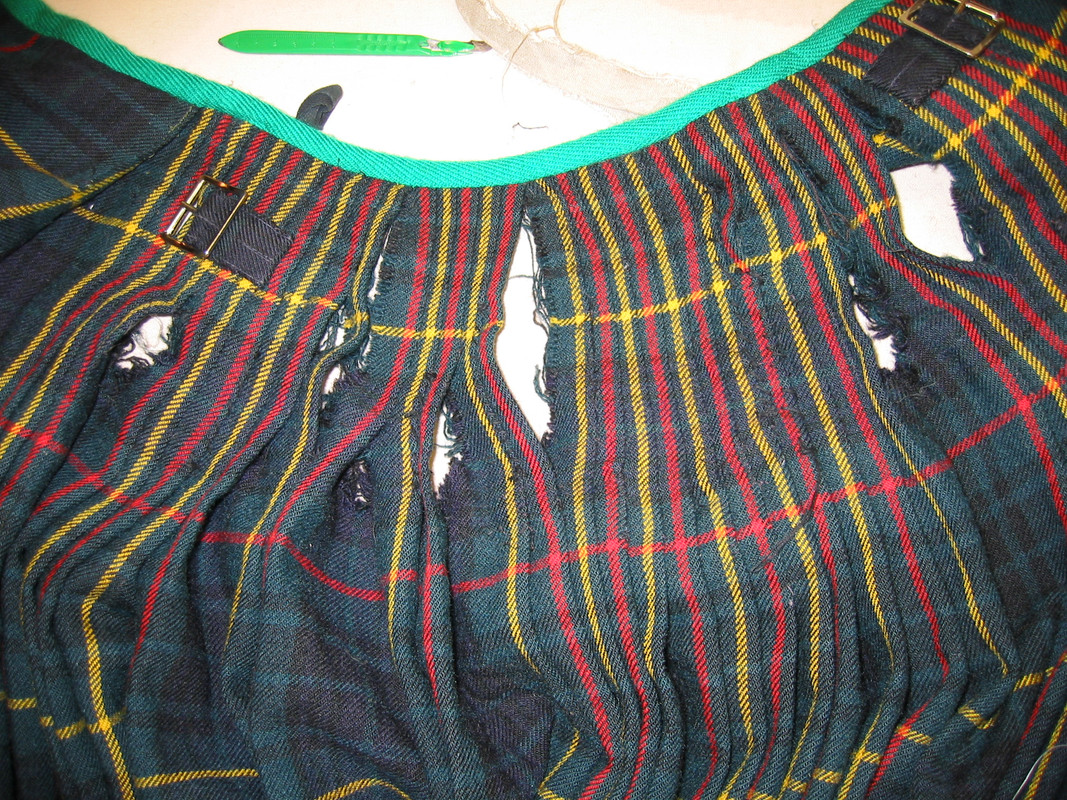
If you are looking at a kilt - and you can lift the inner liner, and there is nothing under it - Run. Run like the wind.
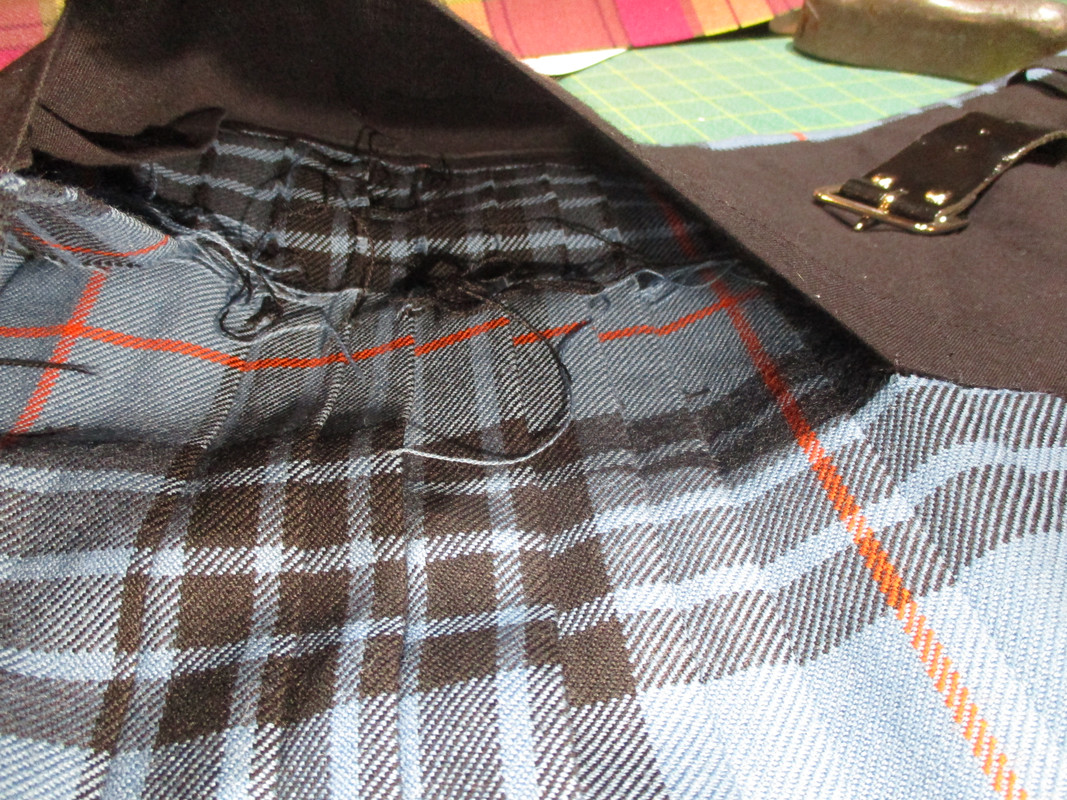
If the Rise does not taper outward a bit. If the aprons are not tapered or are tapered in straight lines. If the lower edges of the apron stick forward or gape open. If the rear of the pleats are not tapered well or some of the Tartan elements are lost in the tapering. Or when you put the kilt on, there are puckers, stress points, pulls, or stressed stitches, you should perhaps look elsewhere.
Last edited by Steve Ashton; 30th December 22 at 01:21 PM.
-
The Following 2 Users say 'Aye' to Steve Ashton For This Useful Post:
 Posting Permissions
Posting Permissions
- You may not post new threads
- You may not post replies
- You may not post attachments
- You may not edit your posts
-
Forum Rules
|
|


































Bookmarks